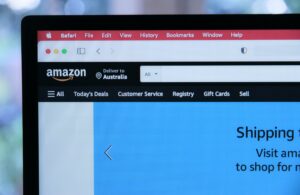by Fatos Fatin of Mazamaze
Introduction: Summary Amazon Statistics
The “Amazon guy” is now a more familiar figure on our street than our postman. With over 300 million* active customers worldwide, Amazon is our go-to destination for anything from stationery to electronics to supplements. Global sales for Q1 of 2022 were reported at a massive $116.44bn**.
What many people don’t appreciate is that a lot of what they buy on Amazon, 58% to be exact, is sold by third-party selling partners. On the US platform alone, there are over 1.9 million* small- and medium-sized enterprises operating as sellers.
There is no doubt that the Amazon landscape is fiercely competitive, and increasingly so. A 2021 survey found that 26% of sellers make less than $12,000 per annum whilst only 6% make $3 million or more***.
Traffic and Conversions, The Basics
So how do we try and capture as large a share of this vast market as possible? In very simplistic terms, there are two primary, inextricably linked components to this complex equation: traffic and conversions.
Traffic is all about trying to get people to your listing in the hope that they might buy. Whether it’s Amazon PPC or external traffic, we have a range of options to help us get our product in front of buyers. I will admit that this is a part of my business I choose to hand over to the experts, I know that they are way better at it than I am!
My mission is to ensure that as many shoppers as possible are able to find my store. And that once they do find it, they go ahead and make a purchase. This is what Amazon listing optimization is all about. It really can make the difference between a sustainable and successful business and a failure.

An optimized listing means that more people will find you. It also means that more of those who click on your listing will buy your product. Higher conversions will translate directly into more profit as your ad spend works so much harder for you. But there’s much more to it. Higher conversions will get you into a virtuous circle or an upward win-win spiral. The more times you convert, the more the algorithm will show your listing. The more times you get shown, the more sales you will make and so on and on… Higher conversions will also move you up the rankings and mean you show up more often organically and this will help drive down your TACOS and further increase your profits, the primary metric by which any business lives or dies.
Amazon Listing Optimization: Keywords
So, what does a fully optimized Amazon listing look like? We all know that a great listing is one which contains all the right keywords to help with discoverability. It is also a listing created by a seller who understands exactly who the target customer is and is able to speak directly to them. So, let’s go ahead and break it down into all the component parts…
First off, let’s talk about keywords. We all know that, as online sellers, we are essentially selling keywords, not products. The algorithm can’t see your product, neither can it touch, taste or smell it. The only way it can identify your product, and therefore decide who to show it to, is via the keywords you choose to include in your listings.
This is why it’s crucial that you identify your most important keywords and make sure they are included in your listing. Importance, however, isn’t simply a function of search volume. Keywords also need to be relevant to your product. Trying to attract buyers to your listing by using non-relevant keywords will at best fail to generate sales but most likely will just waste your money. By way of illustration, let’s assume that you were selling glass espresso cups. What are the chances that “extra-large ceramic coffee cup” will bring you sales?
Let’s just take a step back and assume that we were bricks and mortar store owners. Is Amazon not, in effect, a giant shopping mall where customers come to find products? The moment we start seeing it that way, things start making infinitely more sense…
We put signage outside our physical store, proudly displaying our name, and perhaps a description of what we sell. Let’s just call it “Blossom and Bloom, Premium Fresh and Dried Flowers”. Does that not look and sound remarkably like a listing title?
The primary function of your title is to help your listing be found and also to tell the shopper what your product is. A winning title is one that starts with your brand name and includes your most important keywords in phrase format. It is your single most important asset when it comes to discoverability, but it also needs to be readable and make sense to potential customers. Don’t forget that this is essentially your sign on the outside of your store in the shopping mall. When was the last time you chose to go into a store that advertised itself as “Flowers Dried White Tall For Vases Large”? And would you click on a listing that had that as its title if you were looking for tall white dried flowers for large vases? I’m guessing it’s unlikely…
Amazon Listing Optimization: Visuals
Let’s move along to the next step and say that the customer has found your store in the mall. There are several stores selling flowers so how do they decide which one to go into? Will they pick the one that has a beautiful window display or the one that is messy and run down? Where the shopping mall is the Amazon page, is your main image not your shop window? Whether you ultimately make a sale or not will depend on whether your main image gets clicked on, it is that simple. And that’s why your main image is so vital. A top-quality image which shows your product clearly and fills as much as possible of the white space is your perfect shop window!

In your virtual store, your image stack takes on the role of your in-store display. Your images are your single most powerful selling tool once buyers have landed on your listing and entered your “shop”. Buyers have limited time and short attention spans. Unless you can capture their attention with high quality, attractive images within the first 10 seconds, the chances are that they will “bounce” off your page and move on to the next listing.
In the absence of a real-life sales associate, your listing images and infographics will do all the heavy lifting when it comes to closing the sale. They need to be informative and communicate all the features and benefits of your product. Rich infographics showing key features like size and dimensions need to sit alongside lifestyle images showing the products in use. Relatability is absolutely key. Showing the shopper what the product could do for them makes the buying decision way easier than leaving them to try and imagine this for themselves. And this is why images with live models are an essential part of Amazon listing optimization or any good listing.
Product videos are also an absolute must, for more reasons than one. They are a little like having your own TV commercial within your listing. This is a wonderful tool to show your product in use, highlight its features and benefits and win your customer over. If you are not using videos on your listing, you really are missing a trick.
A product video also brings benefits that stretch beyond the immediately obvious. A moving image is far more likely to capture a shopper’s attention and keep them on your listing for longer. The longer your average time on page, the stronger the signals to the algorithm that your product is worth showing. Isn’t more visibility exactly what we are striving for?
The final piece in the visual puzzle is your A+ content, a super-valuable piece of real estate that Amazon gives us for free. This is the ideal space to showcase your brand values, to talk about even more features and benefits of your product, perhaps incorporate size charts and comparison tables. It has the potential to really boost your sales, by an average of 5%****. You should really capitalise on this space and make sure you are using it to its full advantage with stunning images and keyword-rich text.
Amazon Listing Optimization: Sales Copy
Now on to your sales copy… what is key here is to know your customer avatar. You need to understand their needs, desires and frustrations and be able to empathise with them. You are then ready to start talking to them. Literally…
Your bullet points are where you really have a chance to connect with your customer whilst you inform and educate them about the features and benefits of the product. Think of them as your virtual sales associate who’s there to help and guide the customer. Put yourself in the shoes of your customer and imagine that you enter a store to buy a cashmere scarf. Are you more likely to buy in a store where nobody approaches you and you are left to fend for yourself or in one where you are greeted by a friendly sales associate who asks how they can help you and proceeds to show you all their beautiful merchandise and tells you all about each product?
Your bullet points are where you get to be the welcoming and informative sales associate. Shopping is about fulfilling a need, but it’s also about feeling good. The job of your bullet points is to do just that, to give your customers the WHY: why they should buy your product, why it will help them or make them feel great. Sellers who understand the power of compelling, emotion-driven sales copy are those who will ultimately close the deal. Let’s just go back to the cashmere scarf example, which of these sellers are you more likely to buy from? One whose bullet point reads “100% Scottish cashmere scarf, extra soft” or “Wrap yourself in super-soft, luxurious Scottish cashmere and beat those Winter chills!”? I know which one I would choose!

Final Thoughts
I hope that I’ve managed to get you thinking about Amazon listing optimization and how vital it is to your success as an Amazon seller. None of it is rocket science. The fundamentals of retail are the same, whether you are selling online, in a mall or even on a market stall. Every part of your Amazon listing, from the title and main image to your bullet points and A+ content is there to help you sell your product. If you are not utilizing all of these elements to their full, you will undoubtedly be leaving money on the table.
My main message here is that every seller should make sure their fundamentals are all correct and checked off the list before they jump in and start selling. Give your business the best start and you will see it grow and generate healthy profits for you. If you think that you want to just get started and go back and fix things later on, you may find that you never get the chance. In a fiercely competitive marketplace, the fittest are definitely the ones that survive. Make sure that your business is one that not only survives but one grows and makes you lots of profit. You deserve to be in that top 6%!
Did you like this article? Check out the EcomBalance blog page for more!









